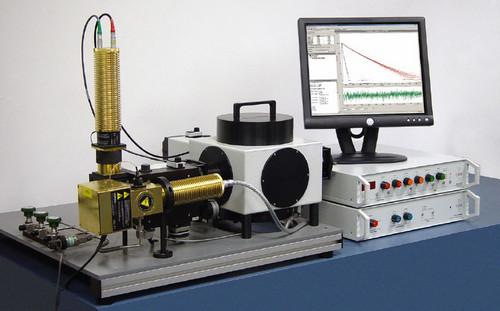DeltaFlex
TCSPC Lifetime Fluorometer
High performance and flexible fluorescence lifetime spectrometer for fast and efficient acquisition of TCSPC lifetime data
The DeltaFlex time correlated single photon counting (TCSPC) system is one of our Delta series of next generation time correlated single photon counting lifetime instrumentation. The DeltaFlex offers the ultimate in flexibility.
This system is designed for the measurement of luminescence lifetimes ranging over 11 orders of magnitude, without the need to change cables or cards. The heart of the system is the DeltaHub timing electronics, which offers nearly lossless counting and allows for the measurement of lifetimes from 25ps to 1 second. Comprised of our high repetition rate sources, high speed detectors and ultra-low deadtime electronics, the DeltaFlex enables fast and efficient acquisition of lifetime data.
Our new F-Link bus brings simplicity to modularity. Simply add any component to the instrument and the system automatically detects the new addition making it accessible from the software.
Finally, with biological probes and applications such as photovoltaics moving further into the NIR, capability for time-resolved measurements in this range is very important. The DeltaFlex can couple with a range of NIR detectors to offer a solution.
The DeltaFlex system uses our interchangeable range of DeltaDiode excitation sources, DeltaHub timing electronics and PPD picosecond detection modules. Add excitation and/or emission monochromators for wavelength selection and complete spectral collection such as TRES. Our TDM-800 monochromator is specifically designed to give low temporal dispersion. Systems are supplied with a sample holder equipped with a digital temperature sensor and magnetic stirrer.
Accessories include a long list of DeltaDiode and SpectraLED sources, monochromators and peltier temperature control, to name a few. The DeltaFlex can be easily upgraded to incorporate motorized devices through the F-Link spectrometer bus.
DeltaFlex-NIR-H optical system shown with H10330 series detector and SpectraLED excitation source.



































































